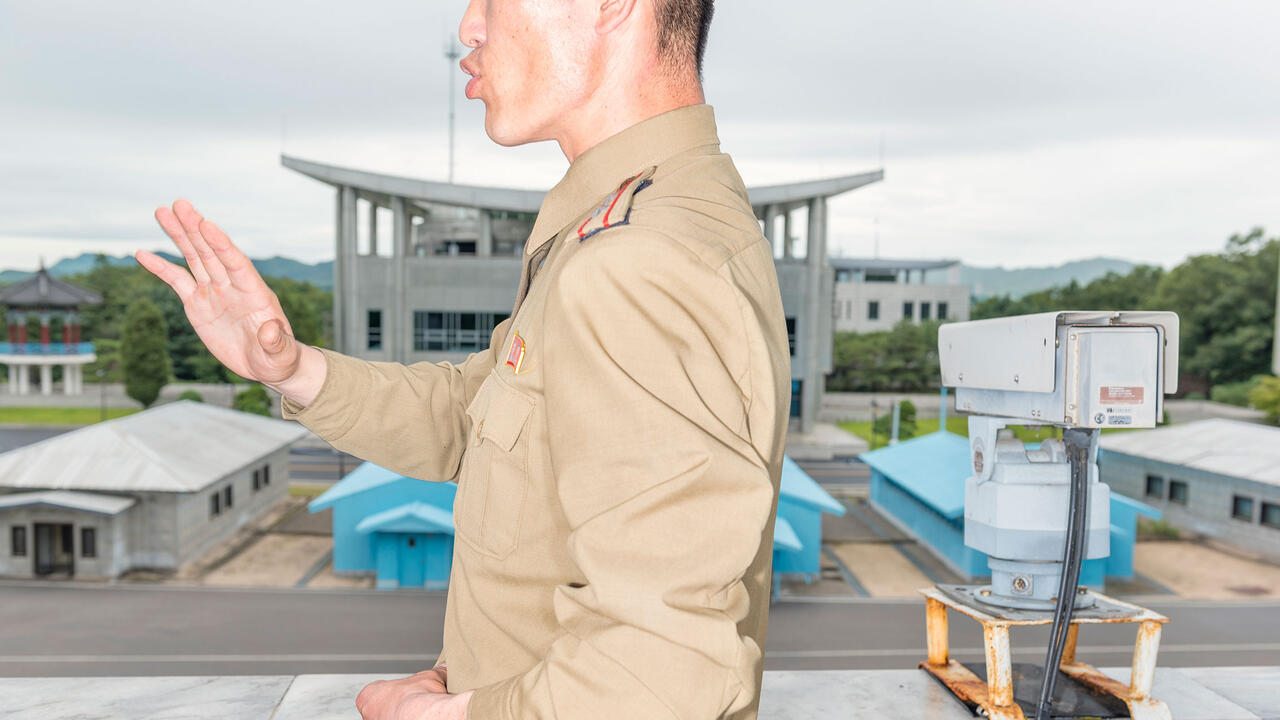Smadar Dreyfus
Extra City, Antwerp, Belgium
Extra City, Antwerp, Belgium

Mother’s Day is different from other holidays in the western region of the Golan Heights, an Israeli-controlled zone where a minority of Syrian Druze Arabs continue to live alongside the Israeli settlements. Every year on this particular day, Druze mothers gather by the ceasefire line which crosses the Golan Heights – a disputed territory since it was occupied by Israel in 1967 – to receive the good wishes of their sons and daughters who are studying in Damascus. The students travel to a point on the Syrian side of the border called the ‘Shouting Hill’ where their spoken messages of affection and longing are amplified by a sound system set up for the occasion. The mothers use megaphones to make their responses heard over the distance of several hundred metres. Israeli-born, London-based artist Smadar Dreyfus took this unique passage of voices across the ceasefire line as a point of departure for her most recent video installation, Mother’s Day (2006–8).
Extra City – which has been attracting attention for its diverse exhibition programme since curator Anselm Franke took over as artistic director – was transformed by Dreyfus’ large-scale installation re-creating this emotional state of separation in the exhibition space. Alternating with shots of the ‘Shouting Hill’, excerpts of text in English translation appear on the vast screen, conveying deeply personal avowals of love, admiration, despair and loss, interwoven with religious proclamations. No shots of either the mothers or the students are shown; we hear only their voices ringing across the foggy landscape. These ‘acousmatic voices’ – as Slovenian philosopher and psychoanalyst Mladen Dolar described them in a talk on the exhibition at Extra City – become the fabric that not only mediates between the familial event and the cultural common but also embodies the geo-political absurdity of separation. The shouters’ proclamations seem to follow a kind of script in what has become almost a performance against the background of this imposing mountainscape. The performative nature of the voices is emphasized in the gallery space by a ramp-like platform that positions the viewers at a certain distance from the projection screen. In conjunction with the sounds emanating from behind it, the ramp serves to locate the audience within the scenario. Subtly emphasizing the fact that the camera position is one of an Israeli artist, the mothers’ voices always sound closer than those of their sons and daughters on the Syrian ‘other’ side.
The intriguing passage of voices confirmed my own recent experiences of commuting between Israeli and Palestinian territories. Privileged by my foreign passport, I played the role of a mediator as I kept being urged to give an account on each side about daily life on the ‘other’. Travelling between borders increases ones awareness of what the architect Eyal Weizman has described as the ‘politics of verticality’: the entanglement of territory with difficult and often conflicting layers of religion, politics and strategy – something which Dreyfus’ installation instantly makes tangible.
The other work in the show, 360 Degrees (2007), is a single-screen video: it consists of a continuous 360-degree panoramic shot, recorded in real time at dusk on a Mediterranean beach located between Tel-Aviv and the ancient city of Jaffa, which now has a mixed Arab-Israeli population. As we see veiled mothers carrying children on their arms while Western-dressed bathers and joggers cross their path, the camera becomes a device to map this densely diverse social and cultural space. In her first solo show outside of the UK, Dreyfus, while avoiding the pitfalls of didacticism, modestly yet decisively conveys a vivid sense of how politics and the burden of history affect the lives of individuals in our present-day realities.
























